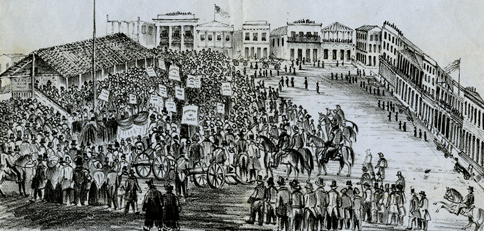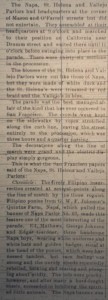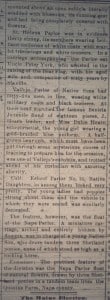California History
Admission Day
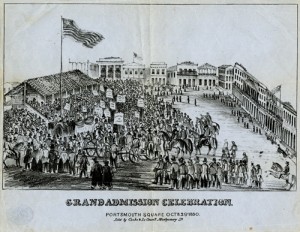 On September 9, we celebrate Admission Day in honor of California becoming a state in 1850. But admission to the United States was a tricky process that had its roots in slavery. Back in 1820, congress agreed to the Missouri Compromise, which attempted to balance out the number of representatives in the House between slave and free states. When Missouri applied to become a slave state in 1818, it would have reduced the Northern majority in the House and tipped the representative scales in the Senate to a Southern majority. A deal was struck to block slavery in the remainder of the Louisiana Purchase territory (everything north of the parallel 36°30′ north) except in Missouri itself. Missouri was added as a slave state, and Maine, which had applied for statehood in 1819, was brought in as a free state, thus keeping the balance.
On September 9, we celebrate Admission Day in honor of California becoming a state in 1850. But admission to the United States was a tricky process that had its roots in slavery. Back in 1820, congress agreed to the Missouri Compromise, which attempted to balance out the number of representatives in the House between slave and free states. When Missouri applied to become a slave state in 1818, it would have reduced the Northern majority in the House and tipped the representative scales in the Senate to a Southern majority. A deal was struck to block slavery in the remainder of the Louisiana Purchase territory (everything north of the parallel 36°30′ north) except in Missouri itself. Missouri was added as a slave state, and Maine, which had applied for statehood in 1819, was brought in as a free state, thus keeping the balance.
The uneasy treaty between abolitionists and slave-owners was short-lived, however. The slavery compromise was nullified in 1854 with the Kansas-Nebraska Act, permitted voters (at the time, only white men of age could vote) to decide for themselves whether or not slavery would be legal in their states. In 1857, the repealed law was further made unconstitutional with the Supreme Court case Dred Scott v. Sanford. Scott, a slave, had been brought to a free state by his owner but was still kept under enforced servitude. Scott tried to sue for his freedom, but the Court declared that Black Americans regardless of whether they were slaves or free were not citizens and had no legal standing. Not until the 14th Amendment was passed in 1868 was this overturned. By the 1860s, both Nebraska and Kansas were admitted as free states.
In California, the push to become a state meant a battle between Northern abolitionists in San Francisco and Southern slaveholders in Southern California and the gold mines. As H. H. Bancroft put it,
“The news that California had formed for herself a free state government was ill received by southern men, who called it a northern measure, and felt themselves wronged…It was an affront to the pride of the south that the outside world did not look with approval upon her pet institution, and it was a wound to the moral sensibility of the north that the whole nation shared in the reproach. The rebuke received from both northern and southern men, and foreigners, in the exclusion of slavery from California, was extremely irritating to the former. To admit California at all under the circumstances would be a humiliation. But the great point was the admission of two senators from a free state to destroy the balance of power. Once gone, it might never be restored. On the other hand, the north felt the perilous position it would be in should the south in its recently revealed temper ever again have control of the national councils.”[1]
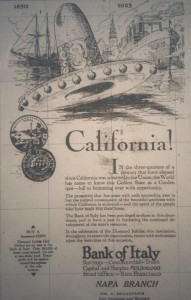 For a brief period, the idea to split the state in two – Northern California as a free state and Southern California as a slave state – was floated, but there was little public support for it. Napa’s male settlers cast their vote for admission at the Empire Saloon, “a real pub, offering…‘square meals’ of beef, hard break (ship’s biscuit, or hardtack) and coffee for only a dollar.”[2] Finally on September 9, 1850, California became the 31st state in the Union, and a free one to boot.
For a brief period, the idea to split the state in two – Northern California as a free state and Southern California as a slave state – was floated, but there was little public support for it. Napa’s male settlers cast their vote for admission at the Empire Saloon, “a real pub, offering…‘square meals’ of beef, hard break (ship’s biscuit, or hardtack) and coffee for only a dollar.”[2] Finally on September 9, 1850, California became the 31st state in the Union, and a free one to boot.
The first capital was located in San Jose, but after an unseasonably rainy winter, the location was deemed unsuitable. General Mariano Vallejo donated some land in what would soon become the city of Vallejo for the new capital, but the state legislature only met there for a week in 1852 and a month in 1853. The capital was relocated a second time, this time to Benicia (also from land formerly held by Gen. Vallejo and named for his wife). The statehouse was built of brick with a white cupola, but the site was deemed too small and unsuitable once more. Finally in 1854 Sacramento was selected as the permanent location for the state capital.[3]
Below is an article from the Napa Daily Journal, September 10, 1900, on the local celebrations:
[1] Hubert Howe Bancroft, History of California, vol. VI: 1848-1859 (San Francisco: History Company, Publishers, 1888), 340-341.
[2] Richard Dillon, Napa Valley Heyday, (San Francisco: Book Club of California, 2004), 91.
[3] California Department of Parks and Recreation, “California Admission Day September 9, 1850,” CA.gov, http://www.parks.ca.gov/?page_id=23856.


